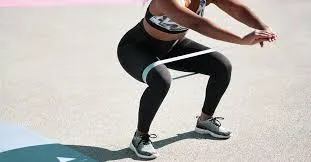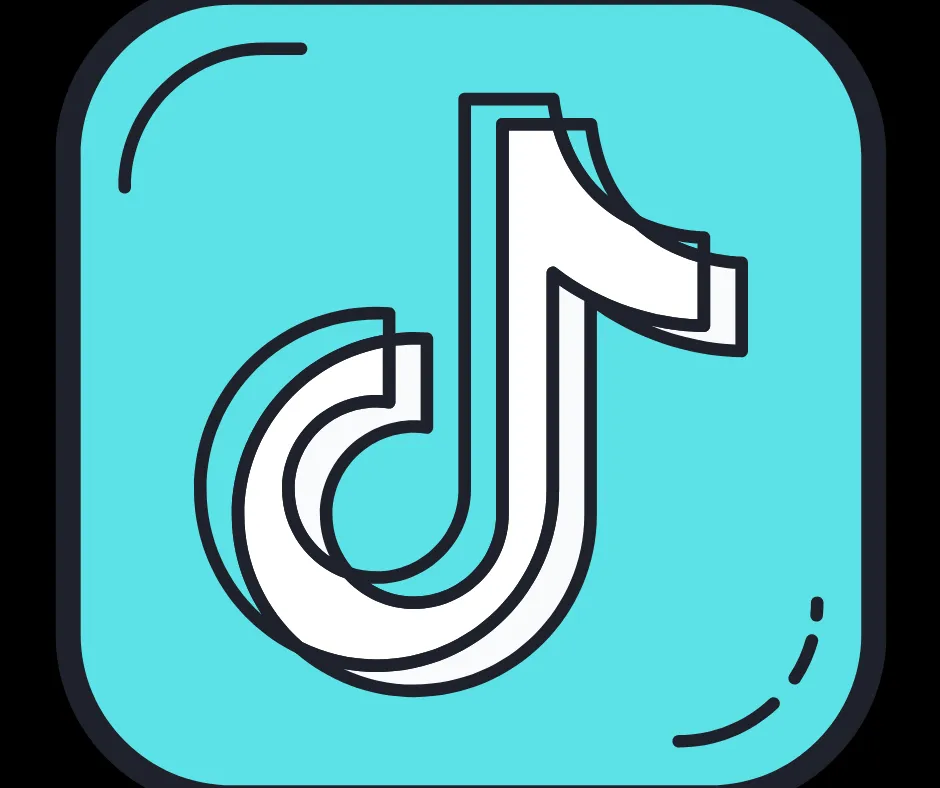NEED HELP? BOOK A CALL

ALL ABOUT GLUTES
“ Rebuild YOU, Heal Your Pain Through Correct Movement - For Long Term Results.” - Lisa Maclean
- ARE YOU TRAINING YOUR GLUTES THE WRONG WAY?
- PAIN IN THE BUTT WHEN SITTING?
**TIPS TO PREVENT & MANAGE PIRIFORMIS SYNDROME
- HOW TO BUILD THE PERFECT BUTT

These days, the glutes get a lot of attention, and it’s well deserved. When you build and strengthen your glutes in the right way, they not only make your body look better, but they also increase your performance and can diminish knee pain.
The problem is most people aren’t taking the best approach to training for the highest level of glute development.
Anatomy of the Glutes

Let’s start with a little anatomy. When we say “glutes” we’re referring to three separate muscles:
Gluteus Maximus
Gluteus Medius
Gluteus Minimus.
The gluteus maximus is, by far, the largest of the three, and it mostly determines the overall shape of your butt. In fact, gluteus maximus earned its name by being the largest muscle in the body.
The gluteus medius is significantly smaller and lies underneath the gluteus maximus.
Finally, gluteus minimus is the smallest of the three, and it lies deep below the gluteus medius.
Functions of the Glutes at the Hip
To develop the most effective training plan for a muscle group, it’s imperative to understand all the primary functions muscle can perform.
The gluteus maximus can perform three functions at the hip:
Extension
Abduction
External rotation.
The primary function of the gluteus medius is hip abduction and the posterior part of the muscle can assist in hip extension and external rotation.
The gluteus minimus works with the gluteus medius to perform hip abduction.
Since the glutes perform three actions at the hips, it’s clear that if you train only one, or even two, of those movements, your results will suffer.
This means you will lack the overall glute strength, which can cause knee pain.
The "Downfall" of Most Training Programs
Variations of the squat, deadlift, lunge, and glute bridge are good choices for strength programs. However, these exercises strengthen only one function of the glutes: hip extension.
By doing nothing but hip extension exercises, you’re neglecting the gluteus medius, gluteus minimus, as well as two other potential functions of the gluteus maximus (i.e., abduction and external rotation), as shown in the table below.

Making a point to start training the glute muscle fibers that perform abduction and external rotation goes beyond muscle development.
You can begin to improve the strength of all three gluteal muscles by including the side plank clam into their sessions:
Modified Side Plank Clamshell with Band
By adding this exercise, you will benefit in three ways:
Less knee pain: The strength of the glutes, especially for producing abduction and external rotation, are correlated with knee health .
Better performance: High levels of glute strength, in all three planes of movement, are beneficial for improving your performance when running, jumping, and quickly changing directions.
Better glute strength: For the glutes to have optimal strength, all three of their potential actions need development. Simply adding the side plank clam into your program will develop hip abduction and external rotation strength. The third action—hip extension—develops through traditional exercises such as squats, deadlifts, and lunges.
How to do it: Start with two sets of a 30-second hold on each side, every day. Increase the duration of the hold by five seconds every 2-3 days, or whenever possible, until you reach 60 seconds. At that point, switch to a band that has more tension and repeat the progression from 30-60 seconds over the course of a few weeks.

Progression and Preventing Knee Valgus
When you watch people land from a jump, or squat a challenging weight, you’ve inevitably seen one or both of their knees buckle inward. This faulty movement compensation is knee valgus and it occurs from a combination of hip adduction and internal rotation.
Simple Solution
There’s an easy way to ensure all three gluteal muscles are strengthened when you perform squats or deadlifts: simply place a mini-band above their knees and cue them to keep their knees directly above the feet in the “knee neutral” position.
Stretching the band kicks in the gluteal fibers that perform hip abduction and external rotation, which are the areas that most people lack strength.
Once you’ve used the side plank clamshell exercise to isolate and build strength in the glutes, you will have a solid muscular foundation to start working on those ever-popular squats and deadlifts with a band above the knees.
Now you have a simple program to help build glutes that not only perform better but also reduce stress to the knees. You can’t beat that combination.
If being specific & having specific sessions is something you are ready for, then check out my REBUILD Release & Restore Program. More support, More dialled in specific targeted areas of your body.

RELEASE & RESTORE SYSTEM to gain a better understanding of what muscles actually like to create better mobility and becoming injury free:
https://rebuildprogram.com.au/release-and-restore-your-mobility
Pain in the Buttocks When Sitting?
Tips to Prevent and Manage Piriformis Syndrome

If you have ever had sensations like sharp pain, numbness, or tingling in your lower back and buttocks (glute) region that travels down the back of your leg, you’re not alone. And, a muscle called the piriformis could be to blame.
What is Piriformis Syndrome?
The piriformis is a small, flat, band-like muscle that originates on the anterior surface of the sacrum and connects the most inferior part of the vertebrae to the upper part of your leg. A simple reference point for this muscle is the back of the hip because it sits on top of the hip joint.
The sciatic nerve, on the other hand, runs alongside or through the piriformis muscle, traveling down the back of the leg and branching into smaller nerves that end in the feet. Much of that pain you experience is from the interaction between the piriformis muscle and the sciatic nerve.
When people have symptoms of piriformis syndrome, some assume it to be a herniated disc. But, an alternative cause, proposed by Freiberg and Vinke and developed by Robinson who coined the term “piriformis syndrome,” is compression of the sciatic nerve from a tight piriformis muscle.
How Does Piriformis Syndrome Happen?
Reciprocal inhibition is a common which happens when muscles on one side of a joint contract and opposing muscles on the other side of the joint relax. This allows movement to take place.
So, tight hip flexors will cause the gluteus maximus to become inhibited, or “silent.” This doesn’t mean movement at the joint can’t occur. Instead, another muscle must pick up the "slack" and in this instance it’s the piriformis.
Since the piriformis is small and not intended to do all this work, it can get overactive and spasm easily in these cases. When this happens, it can compress the sciatic nerve, leading to pain, numbness, and tingling sensations. Because it’s an overactive muscle, spasming from too much work, it just needs a break. By doing hip flexor and piriformis flexibility exercises, these symptoms of tightness and pain subside, restoring normal movement and function.
The pain from piriformis syndrome can occur during many movements since this muscle is so integral in lower body mechanics. But when it’s over-activated, and nerve compression is happening might feel pain just sitting at a desk, in the car, or even while standing.
People who are extremely active and prone to developing this condition include soccer players, track and field athletes, runners, and triathletes. This is due to the constant lifting and rotation of the thigh away from the body.
Including piriformis syndrome stretches into their exercise programming is essential.
How Do I Build the Perfect Glutes?

Everyone wants to be strong and fit. But let’s face it, they also want a perfect butt, glutes, or backside. You’ve figured out how to correct overactive and underactive muscles involving the glutes, and now it’s time to get into the specifics.
First, circle back to the key muscles involved. Those that give the nice, curvy bottom include the gluteus maximus, gluteus medius, and gluteus minimus.
A lot of our daily movements, like walking or running, involve these muscles, and yet, most people never train them specifically.
When you do train your gluteus muscles, it’s possible to achieve hypertrophy, or growth in the size of the muscles. The secret is to target each of the glute muscles and to progressively overload them with high intensity.
You can achieve this within any range of reps, but you get the best muscle hypertrophy results from a rep range of six to twelve and with a heavy resistance.
Can’t I Just Squat and Lunge?
From a lot of people who haven’t done their research, you’ll hear: “Just squat more! And dead lift more!”
Squats, deadlifts, and lunges definitely hit the glutes, but they also target a lot of other muscles, like the quads, hamstrings, abs, and others.
Although some people may build a beautiful butt from just squatting, deadlifting, and lunging, one size does not fit all, and this approach may not work for everyone. For those who need a little extra help, or don’t want to spend all their time in the squat rack, hit those glutes directly.
If you want to really build an impressive tush, you need exercises that cause the highest percentage of muscle activation from the three gluteus muscles.
The glutes are most activated when the hips are near full extension, so focus on exercises that target the glutes and achieve this full range of motion.
Your Best Bets to Target the Glutes
Now, let’s get specific. What exactly are the best exercises for seeing growth in the glute muscles?
• Side plank abductions
• Single-leg squats
• Hip bridges
• Kettlebell swings
• Hip external rotations
• Single-leg elevated hip thrusts
Train the Glutes SPECIFICALLY
The takeaway lesson here is squats and deadlifts are not a sure guarantee. You cannot simply squat and deadlift your way to a firm and curvy backside.
It’s a pretty simple principle: If you want to grow big, strong biceps, you have to train your biceps, not your triceps.
So, if you want to build bigger, stronger glutes? Train the heck out of the glutes, not just the other surrounding muscles in the legs.
What if your thinking “I’m happy with my quad and hamstring development, but my glutes are not up to par. I want to build my glutes up more but keep my quads and hamstrings the same size.”
A tough goal to achieve for sure, but totally possible. Most of the women who say this will likely report they squat, deadlift, and lunge just as much as the guys.
This is exactly why their glutes are lagging behind the development of their quads and hamstrings—most of those exercises are compound movements. The other muscles of the leg take over during the movement instead of giving the glutes their highest percent of muscle activation.
Most importantly, remind yourself who want bigger butts: Adding squats and lunges alone may not do the trick. You must add specific, targeted glute exercises and workouts at least once a week.
If you need help dialing in your prehab workouts, personalised Movement sessions, Nutrition & Mindset so they all work together in one comprehensive plan?
Check out my online one on one coaching program!
I’m a corrective exercise NERD and I want to help you move and feel your best!
(I’m also a control freak so I love getting to tweak things and hold you accountability daily while actually TEACHING you what you need to attain LASTING results.)
1:1 REBUILD Coaching: https://rebuildprogram.com.au/the-rebuild-system






